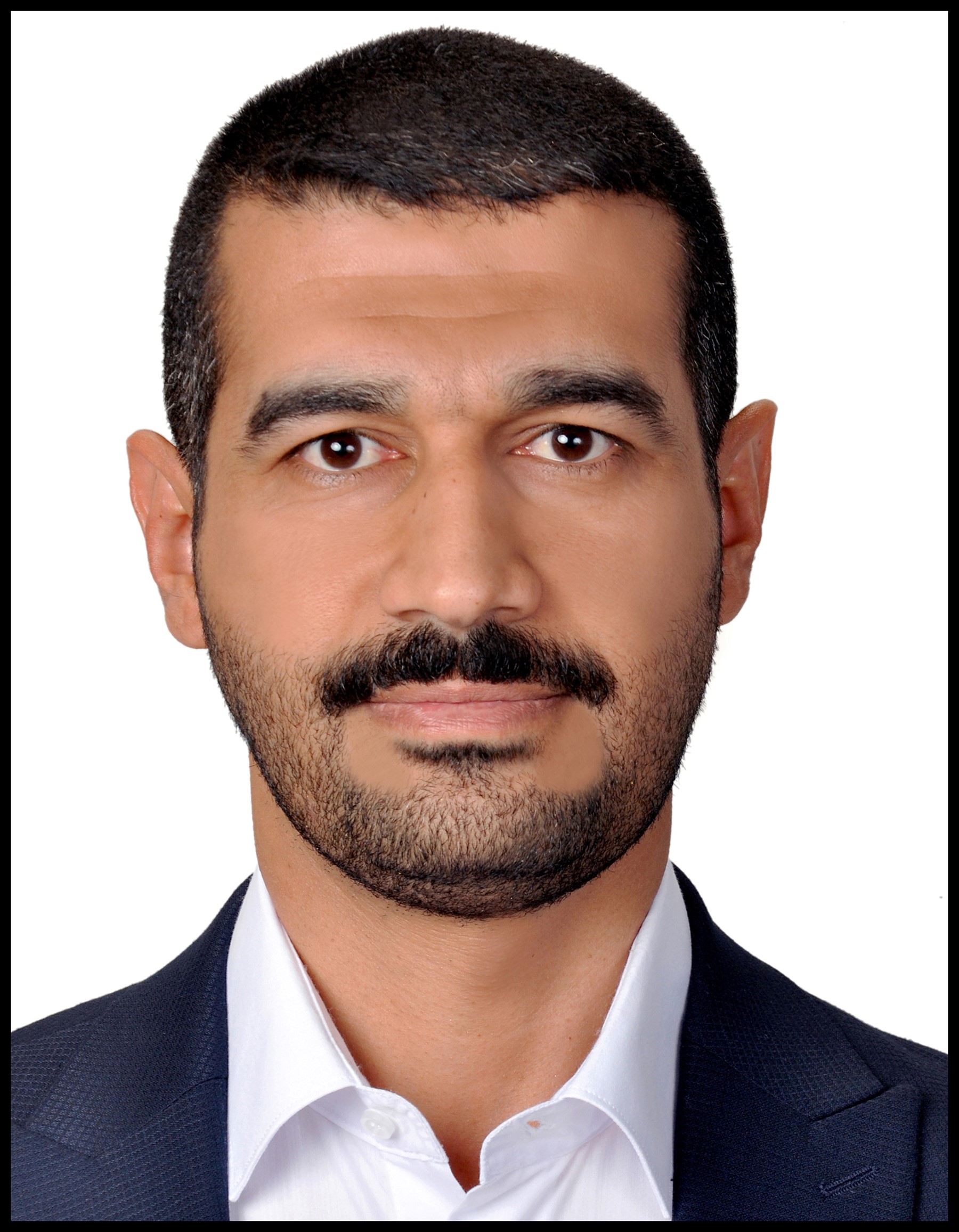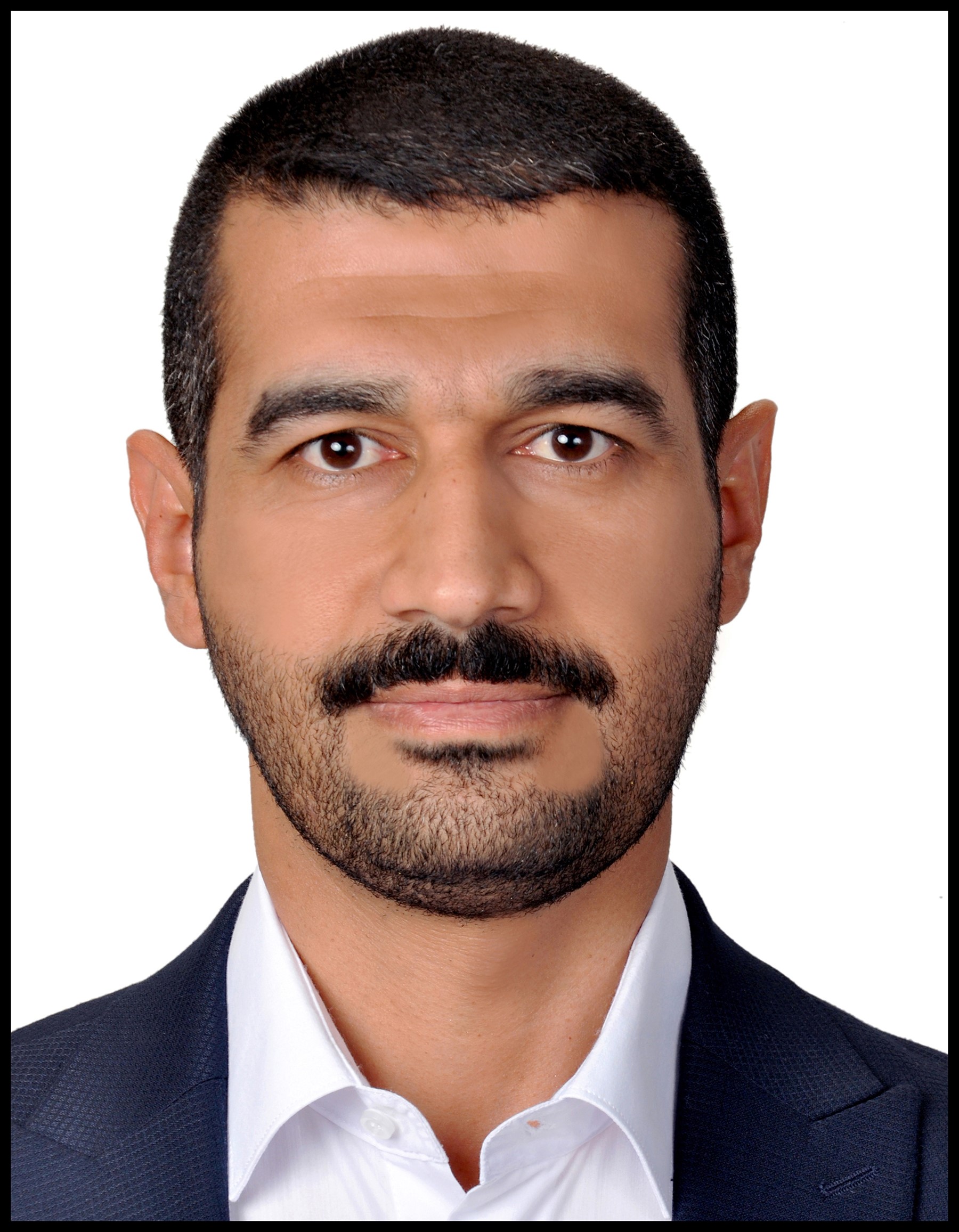
Dheyaa Alhelal
Research InterestsAI
Deep learning
| Gender | MALE |
|---|---|
| Place of Work | Technical Engineering College for Computer and AI / Mosul |
| Department | Department of Computer Engineering Techniques |
| Position | Faculty Member |
| Qualification | Ph.D. |
| Speciality | Computer Engineering |
| dalhelal@ntu.edu.iq | |
| Phone | 07704504164 |
| Address | Mosul, Iraq, Nineveh, Mosul, Iraq |

DHEYAA ALHELAL was born in Mosul, Iraq,
in 1983. He received the B.S. degree in computer
engineering from Northern Technical University,
Mosul, in 2006, and the M.S. degree in computer
engineering from Bridgeport University, Bridge
port, CT, USA, in 2014. He is finished his Ph.D. degree in computer engineering with
Altınbaş University, Istanbul, Türkiye, in 2024.
Since 2007, he has been working as a Lecturer
with the Department of Computer Engineering,
Technical Engineering College / Mosul, Northern Technical University. His
research interests include embedded systems, signal processing, image processing, and artificial intelligence.
Mr. Alhelal has memberships in the Iraqi Academics Syndicate other than
the Iraqi Engineers Union
Skills
Academic Advising & Student Mentorship (90%)
Scholarly Writing & Peer-Reviewed Publishing (85%)
Conference Presentation & Public Speaking (85%)
Effective Communication & Presentation (85%)
Team Leadership & Faculty Coordination (85%)
Academic Qualification
Ph. D. Degree
Jan 28, 2021 - Dec 5, 2024Computer Engineering with Altınbaş University, Istanbul, Türkiye, in 2024.
M.S. degree
Sep 3, 2012 - Dec 21, 2014Computer Engineering from Bridgeport University, Bridgeport, CT, USA, in 2014
B.S. degree
Sep 1, 2022 - Jul 10, 2006Computer Engineering from Northern Technical University,
Mosul, in 2006
Working Experience
Teaching [Lecturer]
May 27, 2007 - PresentTeaching many theoretical and practical subjects to students of the Computer Engineering Department in its four stages
E-learning [E-learning representative for the Technical Engineering College / Mosul]
Sep 11, 2019 - Apr 20, 2020Responsible and liaison member at the Northern Technical University to follow up on the e-learning project
Department Rapporteur [Rapporteur of the Graduate Studies Department]
Apr 20, 2020 - Sep 14, 2020Administrative and organizational tasks for graduate students in the Department of Computer Engineering Technology
Computer and Network Maintenance Division [Responsible for the Computer and Network Maintenance Division at the Computer Center at the University Presidency]
Sep 14, 2020 - Mar 2, 2021Maintenance of computers, printers and the Internet at the presidency of the Northern Technical University and all its departments.
Publications
Designing a System to Recognize Main Arabic Dialects
Nov 11, 2024Journal IEEE Access
publisher IEEE
DOI 10.1109/ACCESS.2024.3494877
Volume Volume: 12
Identifying dialects can be considered as one of the recently attracted researchers. This study concentrates on recognizing between famous Arabic dialects based on speeches or talks. Three types of Arabic talks are considered here namely Arabian Peninsula Dialect (APD), Egyptian Dialect (ED), and Levantine Dialect (LD). We propose three artificial neural network models to identify between the three types of talking. These models are based on the Multi-Layer Perceptron (MLP) network, Convolutional Neural Network (CNN), and Deep Recurrent Neural Network (DRNN). Furthermore, comparisons between the three proposed models are provided. So, a comprehensive study is presented in this paper. Spoken Arabic Regional Archive (SARA) dataset is employed. It is prepared and divided into three groups. These are the Original SARA (OSARA), Filtered SARA (FSARA), and Mixed SARA (MSARA), which consists of both the OSARA and FSARA. According to the results, it has been found that the best accuracy of 90.70% is for the proposed DRNN model with the MSARA group of the employed dataset.
Detection of brain stroke in the MRI image using FPGA
Aug 1, 2021Journal Telkomnika (Telecommunication Computing Electronics and Control)
publisher Universitas Ahmad Dahlan
DOI 10.12928/TELKOMNIKA.v19i4.18988
Issue Issue 5
Volume Volume 14
One of the most important difficulties which doctors face in diagnosing is the analysis and diagnosis of brain stroke in magnetic resonance imaging (MRI) images. Brain stroke is the interruption of blood flow to parts of the brain that causes cell death. To make the diagnosis easier for doctors, many researchers have treated MRI images with some filters by using Matlab program to improve the images and make them more obvious to facilitate diagnosis by doctors. This paper introduces a digital system using hardware concepts to clarify the brain stroke in MRI image. Field programmable gate arrays (FPGA) is used to implement the system which is divided into four phases: preprocessing, adjust image, median filter, and morphological filters alternately. The entire system has been implemented based on Zynq FPGA evaluation board. The design has been tested on two MRI images and the results are compared with the Matlab to determine the efficiency of the proposed system. The proposed hardware system has achieved an overall good accuracy compared to Matlab where it ranged between 90.00% and 99.48%.
Estimation of the number of people in an indoor environment based on wifi received signal strength indicator
Jun 1, 2021publisher Institute of Advanced Engineering and Science
Issue Issue 3
Volume Volume 10
WiFi access points are widely spread everywhere in all our daily life routines. Using these devices to provide services other than the Internet is becoming familiar nowa-days. This paper conducts an experimental study to estimate the number of people in an indoor environment through two system setups, line of sight, and non-line of sight. Relationship modeling between WiFi received signal and the number of people uses polynomial regression. The experiment comprised of two stages: first is the data col-lection from a controlled number of people. Then, the collected data used to train the system through polynomial regression. The second is testing the system’s effective-ness by applying it to an uncontrolled environment. Testing results revealed efficiency in using WiFi received signal strength to do the people counting (up to 60) because of the accuracy achievements of 93.17% in the line of sight system. The non-line of sight system disclosed randomness in the received signal strength indicator regardless of the change in the number of people. The randomness is mainly caused by the fading effect of the concrete wall. Therefore it is inefficient to use the non-line of sight system in concrete buildings.
Assas: An automatic smart students attendance system based on normalized cross-correlation
Apr 1, 2021Journal Bulletin of Electrical Engineering and Informatics
publisher Institute of Advanced Engineering and Science
Issue Issue 2
Volume Volume 10
A smart student attendance system (SSAS) is presented in this paper. The system is divided into two phases: hardware and software. The Hardware phase is implemented based on Arduino's camera while the software phase is achieved by using image processing with face recognition depended on the cross-correlation technique. In comparison with traditional attendance systems, roll call, and sign-in sheet, the proposed system is faster and more reliable (because there is no action needed by a human being who by its nature makes mistakes). At the same time, it is cheaper when compared with other automatic attendance systems. The proposed system provides a faster, cheaper and reachable system for an automatic smart student attendance that monitors and generates attendance report automatically.
Energy efficient cluster based routing protocol for dynamic and static nodes in wireless sensor network
Oct 1, 2018Journal Telkomnika (Telecommunication Computing Electronics and Control)
publisher Universitas Ahmad Dahlan
DOI 10.12928/TELKOMNIKA.v16i5.9930
Issue Issue 5
Volume Volume 16
Power consumption is considered one of the most significant challenges in the wireless network sensors (WSNs). In this paper, an investigation of the power consumption is done by making a comparison between static and dynamic WSNs. We have compared the results of the static network with the results of the dynamic network. Static and dynamic wireless Sensor networks have the same architecture (Homogenous) and proposed protocol. Depending on the suggested protocol, the simulation results show that the energy consumption in the static wireless sensor network was less than the dynamic wireless sensor network. However, moving the sensors in the dynamic WSN present real improvement in delivering packets to the base station. In the proposed routing protocol, transmitting data process is done in a hierarchal way. Cheap sensors are introduced and deploy them intensively to improve the QoS in the network. The final results and the conclusion are reported.
Denoising and beat detection of ECG signal by Using FPGA
Sep 1, 2017Journal International Journal of High Speed Electronics and Systems
publisher World Scientific Publishing Co. Pte Ltd
Issue Issue 3
Volume Volume 26
This paper introduces an efficient digital system design using hardware concepts to filter the Electrocardiogram (ECG) signal and to detect QRS complex (beats). The system implementation has been done using a Field Programmable Gate Array (FPGA) in two phases. In the first phase, Finite Impule Response (FIR) filters are designed for preprocessing and denoising the ECG signal. The filtered signal is then used as the input of the second phase to detect and classify the ECG beats. The entire system has been implemented on ALTERA DE II FPGA by desinging synthesizable finite state machines. The design has been tested on ECG waves from the MIT-BIH Arrhythmia database by windowing the signal and applying adaptive signal and noise theresholds in each window of processing. The hardware system has achieved an overall accuracy of 98% in the beat detection phase, while providing the detected beats and the classification of irregular heat-beat rates in real-time. The synthesized hardware of the ECG denoising and beat detection system yields reasonable hardware resources, making the system attractive to be eventually fabricated as a stand alone hardware system or integrated/embedded within a portable electronic device for monitoring patients' conditions on a daily basis conveinently.
FPGA-based denoising and beat detection of the ECG signal
Jul 15, 2015Journal Applications and Technology Conference
publisher Institute of Electrical and Electronics Engineers Inc.
DOI 10.1109/LISAT.2015.7160184
In this work, an efficient digital system is designed using hardware to filter the Electrocardiogram (ECG) signal and to detect the QRS complex (beats). The system implementation has been done by using a Field Programmable Gate Array (FPGA). In the first phase of the hardware system implementation, Finite Impulse Response (FIR) filters are designed for preprocessing and denoising the ECG signal. The filtered signal is then used as the input of the second phase of the hardware implementation to detect and classify the ECG beats. The entire system has been implemented on ALTERA DE II FPGA by designing synthesizable finite state machines. Quartus II tool has been used to simulate and test the system. The designed system has been tested on ECG waves from the MIT-BIH Arrhythmia database by windowing the signal and applying adaptive signal and noise thresholds in each window of processing. The hardware system has achieved an overall accuracy of 98% in the beat detection phase, while providing the detected beats and the classification of irregular heart beat rates in real time.
Conferences
FPGA-based denoising and beat detection of the ECG signal
May 1, 2015 - May 1, 2015Publisher IEEE
DOI 10.1109/LISAT.2015.7160184
Country USA
Location Farmingdale, NY, USA







